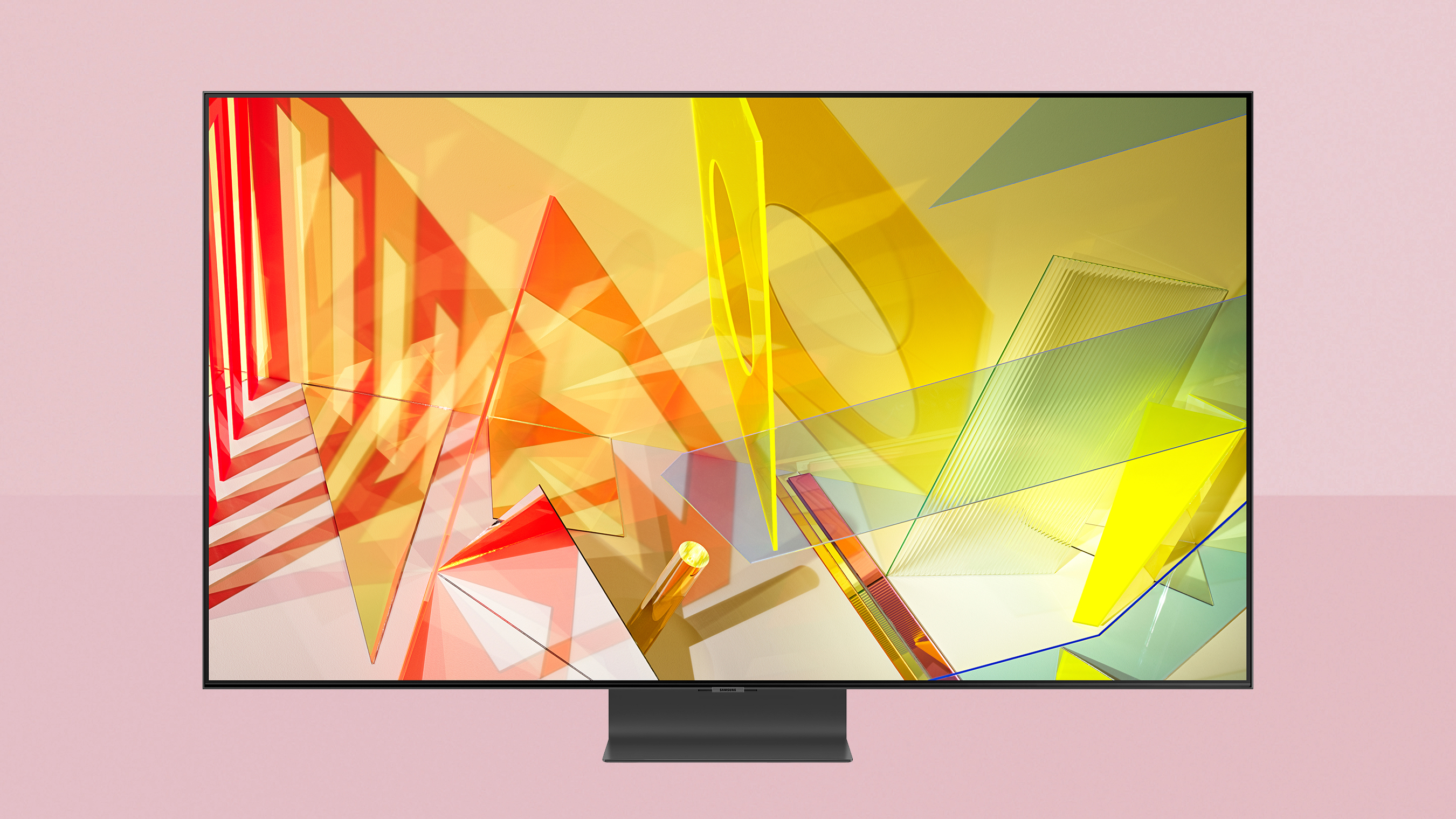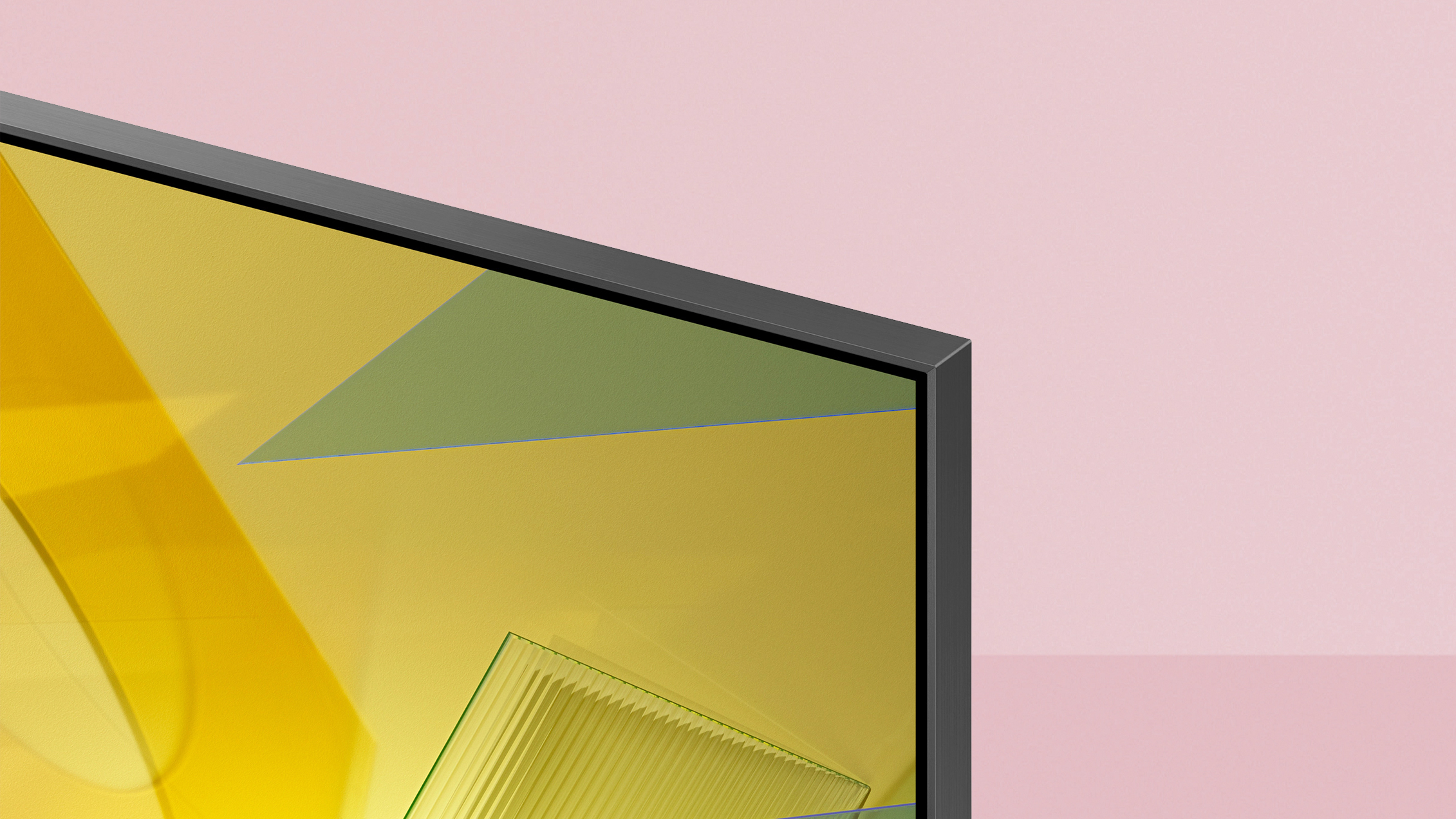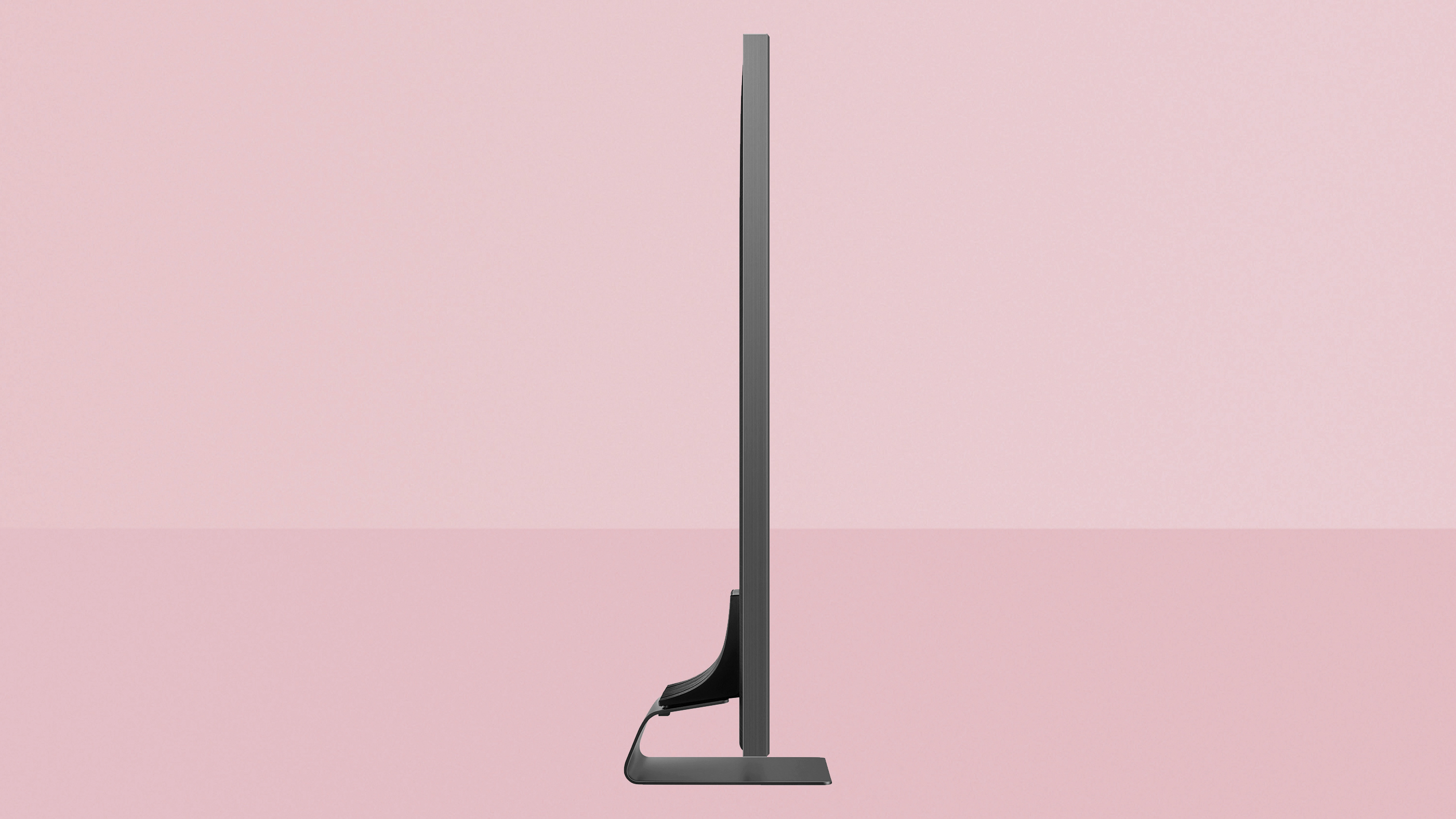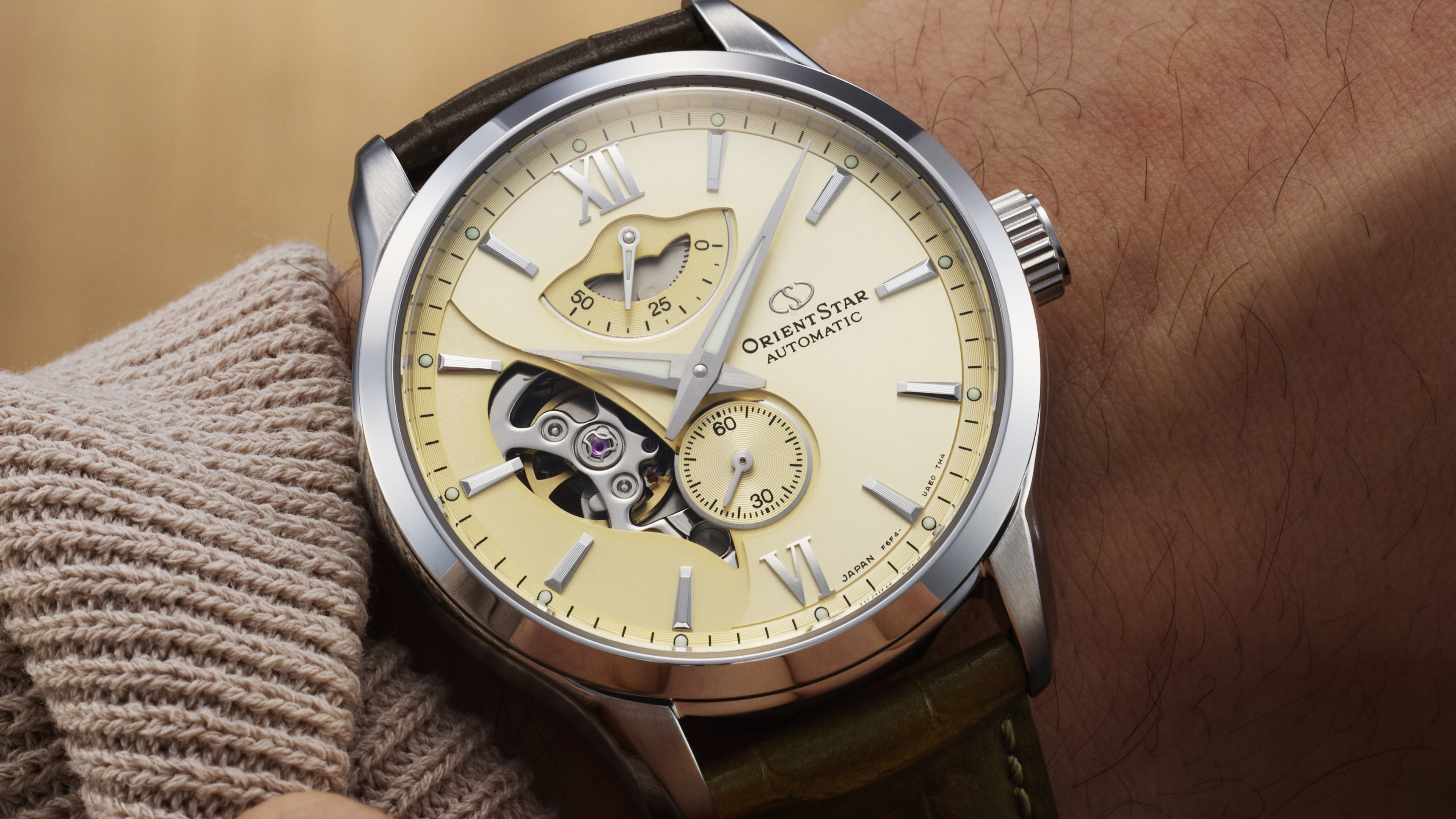Samsung Q95T/Q90T (QE65Q95T) review: an astounding 4K TV at its new lower price
The Samsung Q95T/Q90T pulls no punches to deliver bright and vibrant HDR images


The Samsung Q95T is perfectly suited to the typically bright environment of most living rooms – no TV delivers punchier pictures at the same price. The newer 2021 Neo QLED models are more impressive, but also a LOT more expensive.
-
+
Dazzlingly bright, colourful HDR pictures
-
+
Strong built-in audio system
-
+
Good combination of gaming and video features
-
-
No Dolby Vision support
-
-
Premium price
-
-
Bright highlights can be heavily dimmed
Why you can trust T3

This Samsung Q95T/Q90T review is looking at the company's highest-end 4K TV from 2020, which was built around the goal of unlocking the brightness and colour range you can get with high dynamic range (HDR) pictures. And it absolutely succeeded – for sheer 4K HDR wonder, this TV has only been surpassed by its own replacement: the Samsung QN95A, and its next-gen Mini-LED display. But the 2020 model is still a set you should be thinking about buying, because it's now around half the price it launched at, making is astounding value for money.
You may be curious as to why we're talking about what seems like two separate models? Well the Q95T and Q90T are versions of the same TV – they share the panel technology, the image processing, the smart platform and even the overall design – but with one practical difference: the Q95T comes with a separate box where your HDMI connections etc plug in, keeping the look of the TV itself clean. The Q90T has the ports on the unit itself, making it both slightly thicker and slightly cheaper.
Depending on where you are in the world, you may find that you aren't able to buy both models, but because the core technology is the same, you can apply the findings of this review to either the Q90T or the Q95T.
The Q95T/Q90T offers a winning combination of high brightness, QLED colour technology, a smart backlight system, and an ‘object-based' sound system.
We specifically reviewed the 65-inch Q95T model (QE65Q90T) – let's dive in.
Samsung Q95T review: Price & features
The Q95T/Q90T range was expensive by LCD standards at launch, but then it was Samsung’s most highly specified 4K TV for 2020 – a lofty range position that’s delivered some seriously stunning TVs in recent years.
The Q95T (the version with the external One Connect box for its connections) is available in the UK but not the US, and it comes in four sizes: 55-inch (£2,299), 65-inch (£2,000), 75-inch (£4,499) and 85-inch (£5,999). This version isn't available in the USA. It's well worth checking our Samsung discount codes to snap up a saving.
Its sibling, the Q90T, offers the same image quality but with the connections all on the TV itself. It's available in most countries including the US: 55-inch (£1,999/$1,799), 65-inch (£2,799/$2,699), 75-inch (£3,999/$3,499) and an 85-inch model in the US ($4,999).
As mentioned, though, the Q95T and Q90T have dropped massively in price since then – here are the latest prices for all models.
The Q95T/Q90T uses a clever backlighting system. As with the Samsung Q950TS 8K TV, the QE65Q95T boasts a new power control system that apportions electrical current to different parts of the image more intelligently. In other words, power can be taken away from dark parts of a picture, where it’s not needed, and diverted to bright parts of a picture where it is needed.
That’s not the only new feature the Q95T/Q90T shares with the Q950TS, either. Also onboard is Samsung’s new Object Tracking Sound system, where speakers placed in the top as well as the bottom edges combine with acoustic processing to make sound effects appear to be coming from the correct area of the screen. So if a gun goes off in the bottom left corner, that’s where the report will come from.
The sound can even track the progress of moving sounds as they cross or circle the screen. Though it likely won’t be quite as accurate in this respect as the Q950TS, because it doesn’t have as many speakers around the edges.
Getting back to the picture features, the QLED screen technology delivers images with more brightness and colour volume than normal LCD colour filters. The Q95T/Q90T also carries the latest adaptation of Samsung’s Quantum 4K processor, which includes improved upscaling of sub-4K sources.
Samsung is out to appeal to gamers, meanwhile, with a series of eye-catching features. The time it takes the QE65Q95T to render pictures drops to less than 10ms if you select its Game mode – the lowest such figure I’ve seen on a 4K TV.
There’s also a thoughtful option to introduce a little motion processing within the Game mode while only increasing input lag to around 24ms. This is a welcome option for games – such as RPGs – that might not depend so much on ultra-fast reactions.
There’s an option, too, that adds brightness to dark game graphics without raising the brightness of light graphics, to help you spot enemies that might be lurking in the shadows. Plus there’s automatic low latency mode switching when game sources are detected, and variable refresh rates – both will be supported by next-gen consoles.
Finally on the gaming front, one of the Q95T’s four HDMI ports can handle enough data to support playback of 4K HDR games at frame rates of up to 120Hz. This should be enough to cope with even the most extreme 4K imagery the upcoming Xbox Series X and PS5 are likely to throw at us. Though with this in mind, it’s a pity that only one of the HDMIs achieves such a spec.
The Samsung Q95T/Q90T supports HDR10, live broadcast/stream-friendly HLG and dynamic HDR10+ HDR formats – but as ever with Samsung TVs, there’s no support for Dolby Vision.
Like HDR10+, Dolby Vision adds extra scene by scene information to HDR picture streams to help TVs do a better job with them. But Dolby Vision content is considerably more common than HDR10+, so it’s a shame Samsung won’t join the likes of Panasonic and Philips (Europe) in supporting both dynamic HDR formats.
The Q95T/Q90T does have one cool new HDR feature, though: Picture Optimisation. This uses a light meter to intelligently adjust the way HDR pictures are output so that they still have the same sort of impact in bright rooms that they have in dark rooms. This reflects the fact that some HDR content can actually look dull in a bright room if left to its original mastered light values.
The smart TV system powering the set's software is the latest enhancement of Samsung’s Eden platform. This has become one of the best smart systems around in recent years, in terms both of its clean, economical presentation, and the huge amount of content it carries. Apps available include ALL of the key streaming services (including Disney+ and Apple TV+) and UK catch up apps, with 4K and HDR support always available where a service supports it.
The only thing missing is the Freeview Play app for the UK, which collates the key catch-up apps into a single umbrella app that includes an electronic programme guide capable of scrolling back to missed shows as well as forwards to upcoming shows.

Samsung Q95T review: Picture quality
The first word that popped into my head as the Samsung QE65Q95T burst into life was ‘wow’.
Perhaps because expectations had been lowered by the discovery of how fewer dimming zones it uses than last year’s Q90R 4K flagship, I was amazed by how bright and richly coloured the QE65Q95T’s HDR pictures looked right out of the box. Even though the TV defaults to the Standard rather than even more dazzling Dynamic mode picture preset.
If you still doubt how much brightness really matters for an exciting, authentic HDR experience, a few minutes gawping at the Q95T will address those doubts in spectacular style.
In doing so, the QE65Q95T reminds you in no uncertain terms that premium LCD TVs can hit significantly higher levels of HDR-friendly brightness than OLED TVs can. Though of course, as I’ll get into later, that is only part of the HDR story.
This brightness hits measurable peaks (using a white HDR window covering 10% of the screen) of more than 2000 nits in the TV’s Dynamic picture preset. That’s one of the highest numbers ever seen from a 4K TV, and shows how the Q95T/Q90T justifies its price – it's three times brighter than the more mid-range LG NANO 90 LCD TV.
Even though the brightness drops with the actually more balanced Standard, Movie and Natural presets to around 1500, 1300 and 1200 nits respectively, these are still seriously potent numbers that should unlock more of HDR’s brightness potential than the vast majority of other TVs out there this year.
Given that Samsung has hit similar levels of brightness with previous 4K LCD TVs, though, the biggest surprise about the QE65Q95T’s pictures (in light of its backlight dimming zone situation) is how well it also renders dark picture areas.
For starters, bits of the picture that should look black really do typically look black. In the Standard and Natural picture presets in particular, there’s scarcely a hint of low-contrast greyness to disrupt even the darkest of pictures. So much so that its black level depth is genuinely a rival for OLED TVs in an area that’s traditionally far from one of LCD’s strengths.
Even more impressively, the QE65Q95T’s pictures remain strikingly free of backlight clouding problems despite the set’s relatively few dimming zones. So if a bright object stands out against a dark backdrop, even with HDR content, the halo of light ‘leakage’ around the bright object is so faint you can usually barely see it.
This is again especially true in the Standard or Natural presets. Clouding becomes a bit more noticeable in Movie mode, where the local dimming system seems to be running less aggressively. But even in that mode it’s not a distraction if you’re watching the TV in any sort of ambient light, and remains a relatively minor distraction even if you’re watching the TV in a fully blacked out room.
Compared with 2019 Samsung TVs that sported a similar number of dimming zones, it’s clear that the Q95T’s new power management system is doing some very clever work indeed.

Other strengths of the QE65Q95T include extremely high volumes of colour, plenty of colour subtlety when resolving subtle blends and textures, and extremely high levels of sharpness and detail with both native 4K and upscaled HD images.
In fact, sharpness is one area where the QE65Q95T improves over 2019’s more expensive Q90R 4K flagship sets, which lost a little sharpness due to their then new wide viewing angle technology.
Samsung has refined this technology for 2020, so that while effective viewing angles aren’t as extreme as they were on its 2019 high-end TVs, they still manage to be watchable from wider angles than you usually see with LCD TVs, without compromising resolution.
Samsung’s upscaling engine, meanwhile, is clearly better than anything we’ve seen from previous Samsung generations. There’s a denser, cleaner look to upscaled pictures, especially in areas where detailing in the source content is particularly high.
Motion is pretty well handled too. Especially if you turn off the motion processor’s Auto mode, and instead choose Custom, with the Judder and Blur elements set to relatively low levels of processing power.
For the vast majority of the time, the QE65Q95T’s pictures are glorious. Cue the ‘however’…
At the top of the QE65Q95T’s list of negatives is the amount of brightness the set typically has to remove from bright objects if they appear against dark backgrounds.
This sounds initially like it runs against the promise of Samsung’s new backlight power management system. However, Samsung has long prioritised keeping backlight blooming to a minimum with its premium TVs. And in this case, that means having to limit the brightness of stand-out bright objects pretty heavily. More heavily than it does with its TVs that have more local dimming zones to their name.
Inevitably, too, the impact of this sometimes heavy dimming can mean that colours can lose some of their volume and intensity when surrounded by darkness.
This is, of course, where OLED screen technology comes into its own. Since every pixel in an OLED screen can make its own light, even a tiny bright object such as a star or distant street lamp can appear against a black background without its intensity diminishing at all. All while simultaneously delivering usually deep, rich black tones.
The QE65Q95T’s Standard and Natural picture presets also lose a little subtle shadow detailing in dark areas. And while Samsung’s decision to slightly reduce viewing angle support to boost detail seems a sensible one overall, it does mean contrast can reduce slightly while backlight blooming becomes more noticeable if you have to watch the QE65Q95T from more than 35-40 degrees away from head on.
The Movie preset reduces both of the shadow detail and heavy dimming issues, as well as making dark colours look richer and more natural. But the trade off is a slight reduction in black levels, and slightly more noticeable backlight clouding.
Samsung’s new Adaptive Picture feature works well in relatively bright room situations, but I’d recommend turning it off for dark rooms as it can limit contrast. Finally, while the Game mode works brilliantly from an input lag perspective, it has to turn off quite a lot of the QE65Q95T’s backlight controls, reducing contrast. So you may prefer to avoid Game mode with games that aren’t particularly reaction based.

Samsung Q95T review: Sound quality
The Q95T’s sound is not as powerful or precise as that of Samsung’s Q950TS flagship 8K models. But that’s no more than you’d expect given that this TV uses fewer speakers.
Compared more fairly with similarly priced competition, the QE65Q95T sounds very good. The sound projects nicely away from the screen, for instance - and that includes coming forwards into the room, rather than everything sounding like it’s happening behind the screen, as happens with many flat TVs.
The QE65Q95T can get loud enough, too, to ‘take you to the movies’ without succumbing to speaker distortion. Treble detailing is strong without sounding harsh, and there’s a reasonable amount of bass attached to the bottom end of the open-sounding mid-range.
The ‘object tracking’ system works pretty well too, especially when it comes to creating an audible sense of objects tracking across or up and down the screen.
If you’re watching a film, note that it’s worth switching on the TV’s Amplify feature to give the sound more impact and scale.
Samsung Q95T review: Design & usability
By today’s svelte standards, the QE65Q95T is far from a shrinking violet. It’s back-strainingly heavy, and a good few centimetres deep across its entire rear side. There’s something quite cool about having a TV that’s nearly as flat at the back as it is at the front, though.
The QE65Q95T tidily ships with an external connections box, so that only a single, light-coloured cable has to run into the screen. Even better, the QE65Q95T tries to minimise its impact on your room with the Ambient Mode: a system that plays a photo, digital artwork or video of your choice when you’re not watching the screen in earnest.
Naturally Ambient Mode works with reduced power consumption so that your desire to avoid a gaping 65-inch black hole in your room doesn’t lead to enormous power bills.
The Q90T has a thicker design, because the ports are all on-board, so you're also more likely to see cables dangling out the back. You save a good chunk of money with the Q90T by dropping the external box (well, you do in countries where you can buy both models – in the US, you can only choose the Q90T), but whether you'd prefer the neatness of the external box it up to you
The QE65Q95T is very easy to use. The initial installation runs through everything you really need it to, and even autotunes for channels in the background rather than holding you up.
The interface for the Eden smart platform is economical in the amount of space it takes up on screen, and is really easy to customise so that your favourite apps and content sources appear first on the scrolling home screen content ‘bar’.
Contextual direct content links pop up in a second tier when you highlight an app or source on the bottom row, and this year you can also scroll down through numerous virtual shelves of other curated content, based around genres, themes, specific sources and so on.

Samsung Q95T review: Verdict
The Q95T/Q90T doesn’t fully escape the consequences of having only a quarter as many dimming zones as newer Samsung flagships. In particular, the extent to which it can sometimes dim bright elements in high-contrast images can be pretty noticeable.
The sort of images that create this issue, though, are relatively rare – and for the whole rest of the time, the QE65Q95T’s pictures look downright spectacular. It's the best 4K LCD TV from 2020, blowing us away with its gorgeous, rich HDR images and deep blacks that can make you forget you're not watching an OLED at times.
This is a best-in-class TV, even if it is slightly imperfect. You really won't care when you're watching what it can do; it's utterly engrossing.
Samsung Q95T review: Also consider
At its current prices, the LG CX is probably the hottest competition for the Q95T. It's also a high-end TV from 2020, but this is LG's OLED blockbuster, producing deep cinematic black levels that even the excellent backlight in the Q95T can't really match. The CX can't go as bright as the Samsung, so in bright living rooms the Samsung will be a better choice – but for rooms with less direct light (or if you only watch in the evenings), the CX is simply fantastic.
For other flagship 4K LCD TVs, you should take a look at the Sony XH95/X950H. It's around the same price as this, and offers similarly brilliant punchy, bright HDR colours, but paired with Sony's best-in-class processing for motion (making it fabulous for sport) and for upconverting SDR video into HDR (or as close to it as possible). If suffers from a little more light blooming than this model in areas of high contrast, though, and isn't as well-equipped with gaming features.
Sign up to the T3 newsletter for smarter living straight to your inbox
Get all the latest news, reviews, deals and buying guides on gorgeous tech, home and active products from the T3 experts
John Archer has been testing TVs and AV gear for over 25 years, having worked on Home Cinema Choice magazine. He's a contributor to Forbes, TechRadar, Trusted Reviews, Wired and many more places – if you've owned a TV in the last couple of decades, John's probably reviewed it somewhere. He's seen so many hot new technologies come and go, like tears in the rain.
-
 Polar’s new subscription feature lands in the shadow of Garmin’s Connect+ rollout
Polar’s new subscription feature lands in the shadow of Garmin’s Connect+ rolloutPR genius or timing disaster? Polar’s new Fitness Programme adds adaptive training to its ecosystem
By Matt Kollat Published
-
 New Orient Star watches offer a glimpse of the magic within
New Orient Star watches offer a glimpse of the magic withinThere are two new skeleton pieces
By Sam Cross Published
-
 Netflix's most surprising 100%-rated sci-fi series returns with gorgeous trailer
Netflix's most surprising 100%-rated sci-fi series returns with gorgeous trailerLove Death + Robots is back for more
By Max Freeman-Mills Published